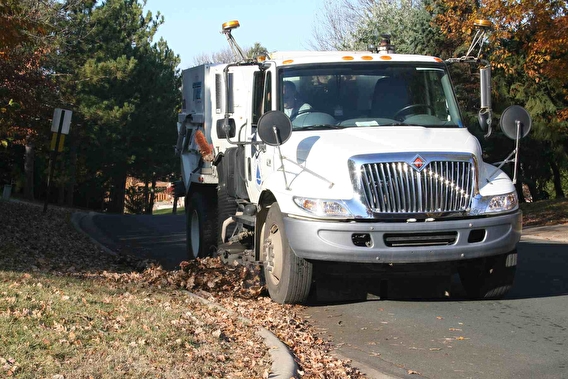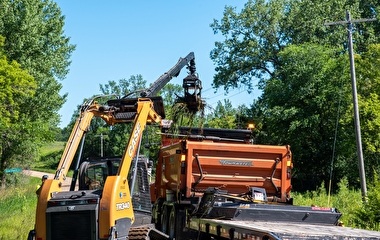
Urban runoff pollution has traditionally been captured using an “end-of-pipe” approach—by catching runoff toward the end of its journey using practices such as stormwater ponds and infiltration basins. There is, however, a lot of untapped potential in “source reduction” methods, which aim to prevent pollutants from ever entering the stormwater system.
A series of three projects involving U of M researchers has studied the potential of using street sweeping to clean up “gross solids”—the sticks, leaves, pollen, dirt, pebbles, and other large materials that drop into storm drains. These materials can leach pollutants such as nitrogen and phosphorous into the stormwater system.
The first project was led by Research Professor Larry Baker from the Department of Bioproducts and Biosystems Engineering and Professor Sarah Hobbie from the Department of Ecology, Evolution, and Behavior. It was funded by the Minnesota Pollution Control Agency (MPCA) and the Environmental Protection Agency and conducted in collaboration with the City of Prior Lake.
The goal, Baker says, was to quantify the removal of nutrients such as phosphorous and nitrogen by street sweeping and determine whether enhanced street sweeping—up to four times per month—could reduce urban runoff pollution at its source.
“While this seems eminently sensible—potentially more effective, cheaper, and fairer—there had been surprisingly little research to learn how to implement source-reduction approaches,” Baker says.
Over the course of two years (2013–2014), the researchers collected around 400 samples from sweeping operations in Prior Lake. They found that the amount of nutrients directly relates to the fraction of tree canopy over the streets. Spring and fall were found to generally produce higher nutrient loads, likely due to pollen and dead leaves.

Using this data, the researchers were able to develop a Street-Sweeping Planning Calculator. The tool enables cities to estimate nutrient removal from their streets and calculate the cost of various sweeping scenarios. “It’s designed to be used within the street department without consultants,” Baker notes.
A follow-up study was conducted in 2020 to collect more data and design a second calculator tool that cities can use to get phosphorous reduction credits. “If you’re in the stormwater management business, it’s fairly important, because these are the numbers you can take to the MPCA and say, ‘We’re doing what’s required of us,’” Baker says.
This study included collaborators from the MPCA and the U of M (Hobbie and Baker, along with Professor Jacques Finlay from the Department of Ecology, Evolution, and Behavior), and it was funded by the Minnesota Stormwater Research Council (MSRC). The data was developed into a spreadsheet calculator by the engineering services company Tetra Tech.
Baker and Finlay are now working with Assistant Research Professor John Chapman from the Department of Bioproducts and Biosystems Engineering to understand how these gross solids move down streets into rain gardens and stormwater catch basins. This project is also funded by the MSRC.
“The next step,” Baker says, “is to integrate knowledge from the three projects and enable stormwater managers to reduce the inputs of nutrients from gross solids to our urban lakes and streams.”
The effects of climate change will also need to be considered, Baker says. Data describing gross stormwater pollutants will need to be further studied as climate change alters the dynamics of storms and runoff. The Minnesota DNR has reported dramatic increases in 1-inch and 3-inch rainfall events, and climate projections indicate that these big rains will continue increasing into the future.
“We’re going to have more of this stuff washing in, and it’s going to change the dynamics of gross solids,” Baker predicts.
Baker presented his findings during a 2021 CTS webinar on October 13.
Writer: Sophia Koch


